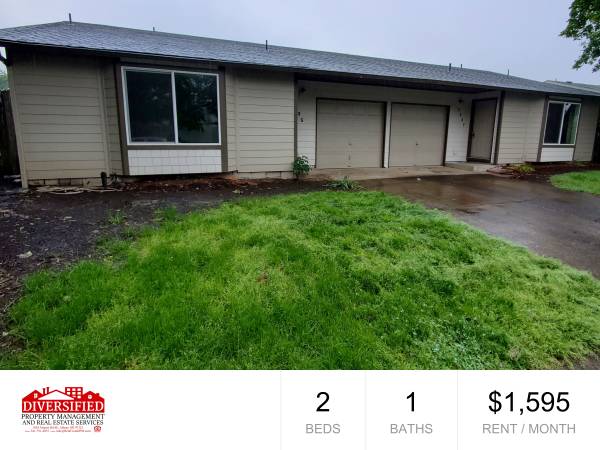When looking for a new apartment, it's important to consider all the expenses that come with it, including the monthly electricity bill. Whether you're powering up your kitchen appliances or lighting up your living room, electricity usage plays a significant role in the comfort and convenience of apartment living.
So, if you're wondering what the average electric bill for an apartment is, you're in the right place! In this blog post, we'll be taking an in-depth look at the estimated average electric bill for apartments with 1 or 2 bedrooms, so you can budget accordingly before signing a rental agreement.
How much does electricity cost for a 1-bedroom and 2-bedroom apartment?
In the United States, the average monthly electricity bill for a one-bedroom apartment varies from $60 to $80, depending on the number of occupants. For a two-bedroom apartment, the cost is slightly higher at approximately $90 per month.
How much electricity do 1-bedroom and 2-bedroom apartments use?
To estimate your monthly electricity costs when renting an apartment, it's essential to be aware of the average electricity usage for the size of the apartment you're interested in. For instance, one or two-bedroom apartments tend to consume 20-30 kWh of electricity daily, which totals around 900 kWh each month.
It's crucial to remember that electricity rates vary depending on your state and zip code, so it's necessary to research the specific rates in your area.
Moreover, if you're sharing an apartment with others, you should consider how to split the electricity costs among the tenants.
What electrical appliances are costing you the most?
1. Heating and cooling: 45-50%
The average electric bill for apartment can vary significantly based on factors such as location, electricity rates, and usage patterns. However, heating and cooling appliances remain the primary electricity users in an average household, accounting for up to 50% of the total electricity usage and contributing significantly to the overall electricity bills of apartment renters.
2. Water heater: 12%
In most homes, an electric water heater is the second-largest consumer of energy. This is because hot water is used for various activities such as showering, washing dishes, and doing laundry, which can add up to significant energy usage each month. As a result, electric water heaters are a significant source of energy consumption in households.
3. Lighting: 9-12%
Although modern lightbulbs are designed to be more energy-efficient, lighting still represents a significant portion of the monthly electricity consumption in households. The reason for this is that lighting fixtures are used frequently. However, the latest lighting technology, such as LED bulbs, consume much less energy compared to traditional bulbs like CFLs and incandescent bulbs.
LEDs last longer and are more cost-effective to run, making them the most efficient and sustainable lighting option currently available on the market.
4. Refrigerator: 8%
A refrigerator doesn't consume a large amount of energy per hour, but it operates continuously, resulting in a significant amount of energy consumption over time. Since refrigerators must be kept on to preserve food, they are always consuming electricity. As a result, they can contribute significantly to the overall electricity usage in a household.
5. Washer and dryer: 5%
The amount of energy consumed by your washer and dryer depends on how frequently you use them. When you do operate these appliances, they tend to consume a considerable amount of electricity, particularly if you use hot water. The process of doing laundry typically accounts for about 5% of the annual electricity usage in a household.
6. Electric oven: 3%
The process of cooking requires a significant amount of energy, particularly when using electric ovens and cooktops. In most households, electric ovens consume around 3% of the monthly electricity usage.
7. Dishwasher: 2%
Although dishwashers consume a relatively small amount of electricity, they still contribute to the monthly electricity usage in a household. On average, dishwashers account for approximately 2% of the total monthly electricity consumption. To minimize the electricity usage of dishwashers, it is recommended to operate them with a full load and use energy-efficient settings whenever possible.
8. TV and cable box: 2%
Modern televisions and cable boxes are designed to be energy-efficient, but they still consume electricity even when not in use. The standby mode of these devices may accumulate significant electricity usage over time, resulting in approximately 2% of the total monthly electricity consumption. To reduce the electricity usage of your TV and cable box, it is recommended to turn them off completely when not in use or unplug them from the power source.
How to calculate how much electricity your appliances use.
To reduce your electricity expenses, it's important to determine the amount of electricity consumed by each of your appliances. This will enable you to pinpoint areas where you can conserve energy and save money. Perchenergy provides assistance with this task. You can visit perchenergy.com and use their energy cost calculators, which are designed to estimate the energy consumption of common household appliances.
FAQs about Average electric bill for apartment
How many kWh does a 500 sq ft apartment use?
The amount of electricity consumed tends to increase proportionately with the size of a house, apartment, or condo. For instance, a 500-square-foot home on average consumes 400 kWh of electricity, while a 1,000 square foot home consumes around 880 kWh.
Average electric bill for 1 bedroom apartment in texas?
Renters of one-bedroom apartments in Texas can expect an average monthly electricity bill ranging between $105 to $120. Actual bills may vary depending on factors such as electricity usage and air conditioning habits. For instance, renters who use less air conditioning may have bills below 500 kWh. Conversely, reckless electricity usage may result in bills exceeding 1,000 kWh.
Does unplugging appliances save electricity?
If you unplug your devices once they have finished charging, you can conserve energy and also prolong their lifespan. However, it is recommended that devices such as modems, routers, and cable boxes remain plugged in, as they may take a significant amount of time to reboot once powered off.
How much is the average electric bill in MA?
The average monthly electricity cost for residential customers in Massachusetts is $255, determined by multiplying the average monthly energy consumption of 833 kWh by the average electric rate of 31 cents per kWh.
Conclusion
Thank you so much for taking the time to read our blog post on average electric bill for apartment.
In conclusion, the average monthly electricity bill for a one-bedroom apartment in the United States falls between $60 to $80, while for a two-bedroom apartment, the average cost is around $90 per month. To manage electricity costs, it is recommended to monitor energy usage and consider energy-efficient measures to help reduce electricity bills.



![[Home Rental] Ladder To A Perfect Abode – Steps To Follow](https://allinfohome.com/storage/photos/63a15e801ec01ae13b0450f2/Home-rental-2.jpg)

